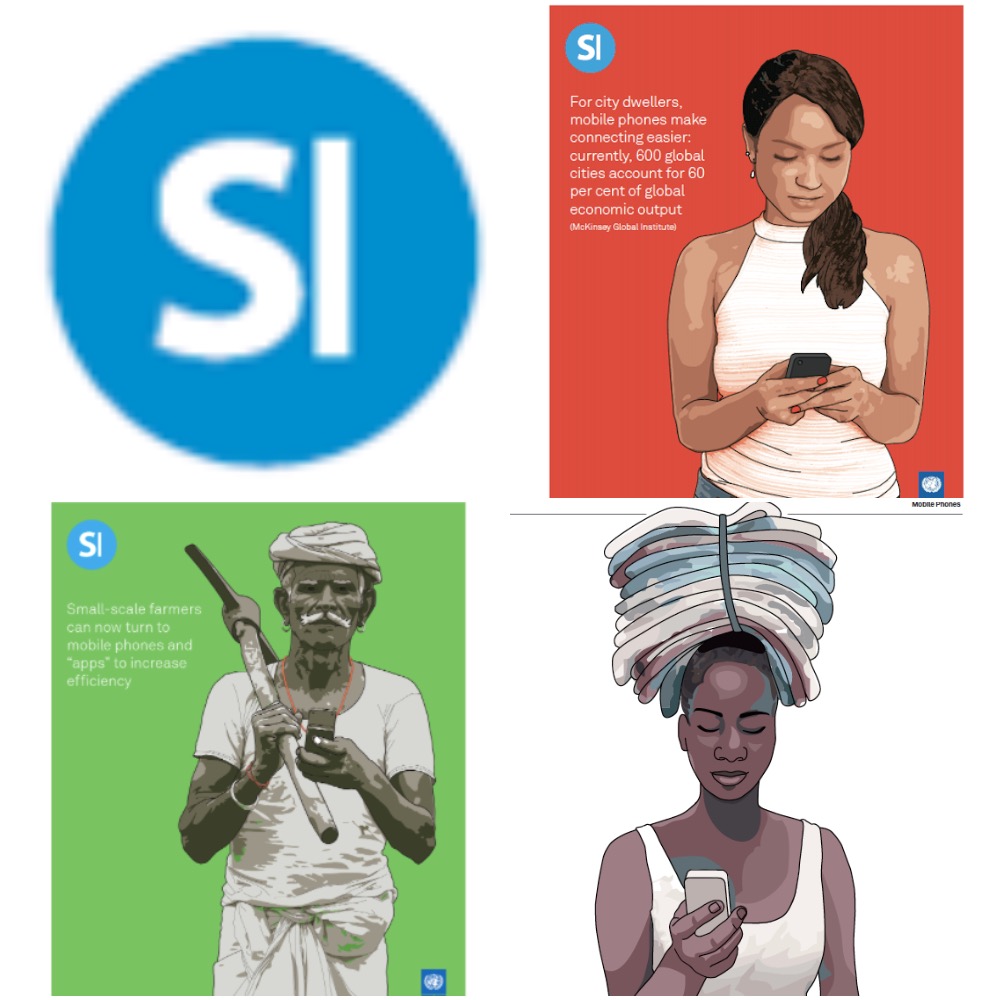
Bangladesh’s poor can now buy and sell goods and services with their mobile phones, thanks to a Bangladeshi company’s pioneering mobile phone marketplace. The company, CellBazaar, serves as a useful role model for other Southern entrepreneurs and companies looking to develop and market mobile phone applications for the poor that really help them.
CellBazaar is simple to use: A user begins the process by texting the word “buy” to short message (SMS) code 3838. They then are offered a list of all the items for sale and scroll through them to find what they want. When they have found something, they send another SMS. In response, an SMS comes back telling the seller’s phone number. And from that point, business is underway between the buyer and the seller.
“It’s a far more efficient way of finding things. In the past you have to go to newspapers, magazines, and find the best match,” founder Kamal Quadir told MobileActive.
The categories run from used cars and motorcycles, to new laptops, agricultural products like corn, chickens and fish, educational tutors, jobs, and places for sale and rent.
Quadir said he had the idea for CellBazaar when he was a graduate student at MIT, the Massachusetts Institute of Technology in the United States.
“I was surrounded by technologically sophisticated people,” he said. “I saw all this technological possibility and heard one top-notch scientist mentioning that a very cheap mobile phone had the same capabilities as a NASA computer in 1968. A country like Bangladesh has 35 million NASA-type computers, and most importantly, they’re in people’s pockets.”
Quadir saw all this power going to waste, and realized how business was being held back by the lack of information. Absence of market intelligence – or what is available for sale and what is a good price – was a big impediment to more profitable and efficient business transactions.
Quadir first created the idea at MIT Media Labs and eventually signed a contract with GrameenPhone. CellBazaar launched in July of 2006, and, after a year of beta testing, the team started to actively market the service in August 2007.
CellBazaar can also be accessed through its website. This has the advantage of making what is a very local market an international market.
Partnering with GrameenPhone, Bangladesh’s leading telecommunications service provider with more than 18 million subscribers, had its advantages. With 60 percent of the Bangladesh market, “their network is larger than others,” Quadir said.
Just as web applications like Google and the powerful social networking website Facebook (www.facebook.com) transformed the way people work and socialize, so CellBazaar has needed to encourage a change in behaviour for it to work. At first, people didn’t think they had anything worth selling, or that they could use the text messages to connect to a marketplace.
“In the past, a rural village person couldn’t even imagine that they wanted to sell something and the whole world would be willing to buy it,” Quadir said. “The biggest challenge we have is people blocking that audacity and courage.”
To date, over 1 million people have used the service out of a country of 150 million people. “Fundamentally the real issue is about changing people’s patterns,” he said. “But once they learn how to use it, people start doing it really frequently.”
The CellBazaar experience also shows how critical clever marketing is to business success. The company has been marketed through tastefully designed stickers placed in the windows of cars, taxis and microbuses — ubiquitous and continuous publicity for low cost.
CellBazaar also has launched educational booklets for four target audiences: villagers and farmers, the elderly and retired, young professionals, and tech-savvy teenagers. There are detailed booklets for those who want step-by-step instructions, as well as short leaflets for customers who want to carry a “quick guide” in their pocket.
CellBazaar launched its first television campaign during the Muslim festival of Eid in 2007. The ads featured a newspaper seller called Shamsu Hawker, and show how he begins a new career buying and selling used televisions with the help of CellBazaar. The advertisement’s unusual setting on a train, as well as positive imagery of Bangladesh, created a sensation among TV viewers. The character “Shamsu Hawker” has become a nationally recognized icon and popular cultural figure.
As the service grows, the demographic that uses it has also expanded. “Young people were the early adopters,” said Quadir. “Initially urban people used it more, because we didn’t market very aggressively. Word of mouth spread faster because of the higher concentration of people in cities. But now it has spread to rural areas as well.”
CellBazaar has won many awards for its innovation in social and economic development.
The ambitious Quadir wants to expand CellBazaar into East Africa, Eastern Europe, and South Asia. Unlike the web, CellBazaar has to make deals with local mobile phone providers. He can’t just offer the service through the internet. “The Internet belongs to everybody — like highways and like fresh air,” said Quadir. “Mobile networks are privately owned.”
“So far the operators we have worked with have been very good,” he said. “We are very selective in terms of what operator we work with.” As CellBazaar looks to expand, Quadir is focusing efforts on places that have high mobile penetration rates and low web penetration. “We’re looking at any place that has less internet. No matter how good the application is, having internet and high computer penetration doesn’t help us,” he said. “And mobile is everywhere.”
The same lesson is being learned around the world. A study of grain traders in Niger found that “cell phones reduce grain price dispersion across markets by a minimum of 6.4 percent and reduce intra-annual price variation by 10 percent.” According to the study, “The primary mechanism by which cell phones affect market-level outcomes appears to be a reduction in search costs, as grain traders operating in markets with cell phone coverage search over a greater number of markets and sell in more markets.”
Mobile phones are now the fastest growing consumer product in history. Portio Research estimates that between 2007 and 2012 the number of mobile subscribers will grow by another 1.8 billion, mostly in emerging economies like India and China.
Informa Telecoms and Media estimates mobile networks now cover 90 per cent of the world’s population – 40 per cent of whom are covered but not connected. With such reach, finding new applications for mobile phones that are relevant to the world’s poor and to developing countries is a huge growth area. It is estimated that by 2015, the global mobile phone content market could be worth over US $1 trillion, and basic voice phone calls will account for just 10 per cent of how people use mobile phones.
Leonard Waverman of the London Business School has estimated that an extra 10 mobile phones per 100 people in a typical developing country, leads to an extra half a percentage point of growth in GDP per person.
The experience in the Philippines has shown that the best way to drive fast take up of mobile phone services is to offer something very practical and connected to personal income.
“The most significant lesson learned so far,” said Shawn Mendes, lead author on the report, The Innovative Use of Mobile Applications in the Philippines: Lessons for Africa, “is that m-Banking, rather than more altruistic applications such as m-Health and m-Education, has delivered the greatest benefits to people in developing countries.”
By David South, Development Challenges, South-South Solutions
Published: October 2008
Development Challenges, South-South Solutions was launched as an e-newsletter in 2006 by UNDP's South-South Cooperation Unit (now the United Nations Office for South-South Cooperation) based in New York, USA. It led on profiling the rise of the global South as an economic powerhouse and was one of the first regular publications to champion the global South's innovators, entrepreneurs, and pioneers. It tracked the key trends that are now so profoundly reshaping how development is seen and done. This includes the rapid take-up of mobile phones and information technology in the global South (as profiled in the first issue of magazine Southern Innovator), the move to becoming a majority urban world, a growing global innovator culture, and the plethora of solutions being developed in the global South to tackle its problems and improve living conditions and boost human development. The success of the e-newsletter led to the launch of the magazine Southern Innovator.
Follow @SouthSouth1
Slideshare: http://www.slideshare.net/DavidSouth1/development-challengessouthsouthsolutionsoctober2008issue
Southern Innovator Issue 1: https://books.google.co.uk/books?id=Q1O54YSE2BgC&dq=southern+innovator&source=gbs_navlinks_s
Southern Innovator Issue 2: https://books.google.co.uk/books?id=Ty0N969dcssC&dq=southern+innovator&source=gbs_navlinks_s
Southern Innovator Issue 3: https://books.google.co.uk/books?id=AQNt4YmhZagC&dq=southern+innovator&source=gbs_navlinks_s
Southern Innovator Issue 4: https://books.google.co.uk/books?id=9T_n2tA7l4EC&dq=southern+innovator&source=gbs_navlinks_s
Southern Innovator Issue 5: https://books.google.co.uk/books?id=6ILdAgAAQBAJ&dq=southern+innovator&source=gbs_navlinks_s

This work is licensed under a
Creative Commons Attribution-Noncommercial-No Derivative Works 3.0 License.
 Sunday, June 21, 2015 at 4:23PM
Sunday, June 21, 2015 at 4:23PM 
 Africa,
Africa,  David South,
David South,  Development Challenges,
Development Challenges,  South-South Solutions,
South-South Solutions,  Southern Innovator,
Southern Innovator,  Uganda,
Uganda,  batteries,
batteries,  battery,
battery,  energy,
energy,  mobile phones,
mobile phones,  mobiles,
mobiles,  poor in
poor in  David South Consulting,
David South Consulting,  Development Challenges, South-South Solutions,
Development Challenges, South-South Solutions,  GSSD Expo,
GSSD Expo,  Global South-South Development Expo,
Global South-South Development Expo,  Southern Innovator Magazine,
Southern Innovator Magazine,  UNDP,
UNDP,  UNDP Innovator Stories,
UNDP Innovator Stories,  UNOSSC
UNOSSC 




